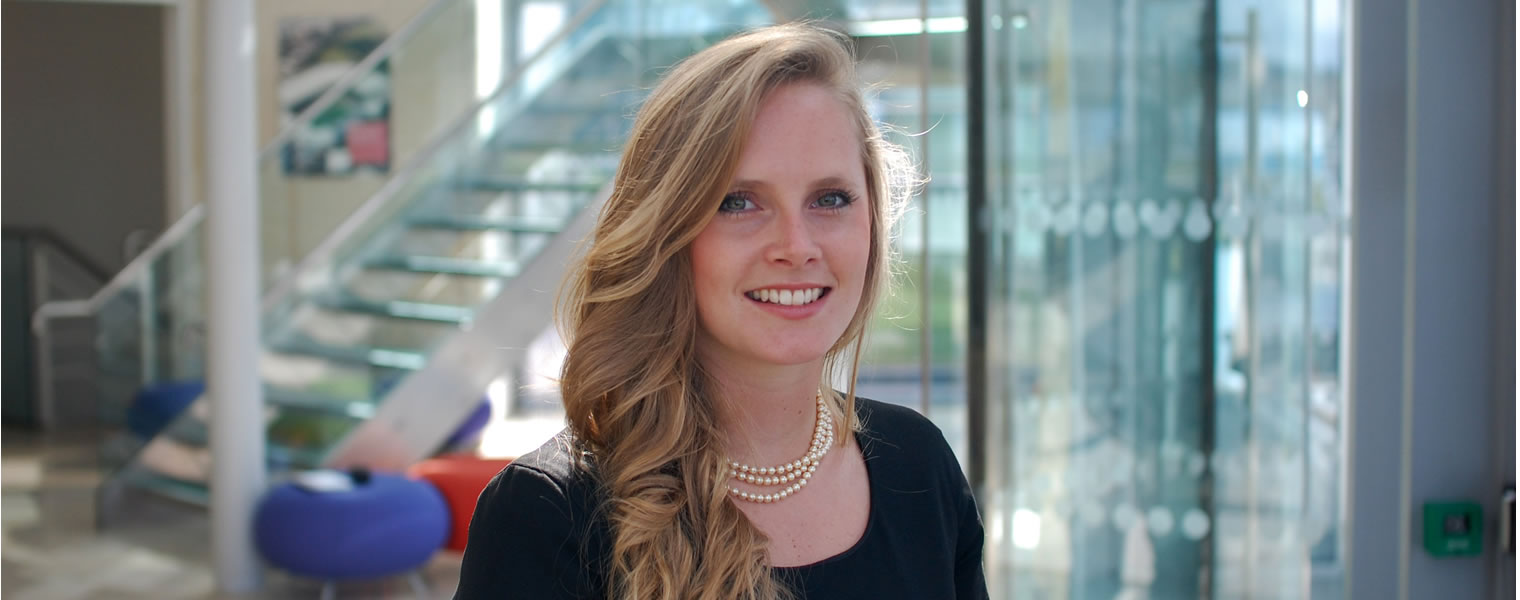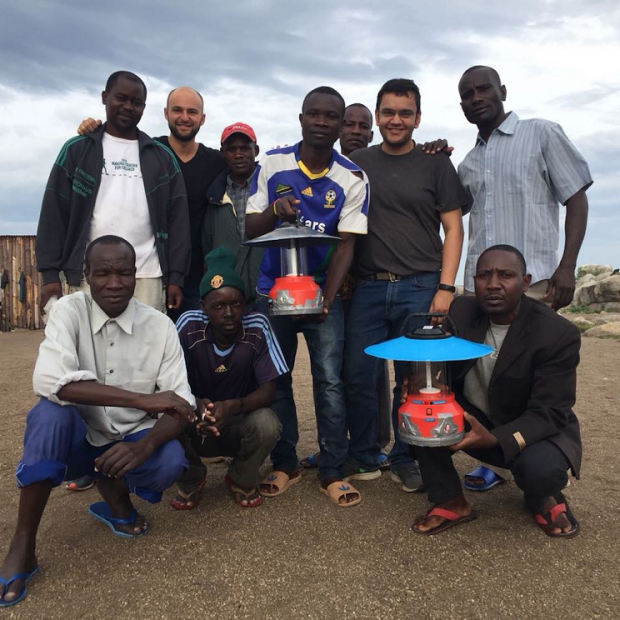Hartley News Online Your alumni and supporter magazine
Civil Engineering and Architecture alumna, Claire Gott, was awarded an MBE in the Queen’s New Years’ Honours List this January for her work founding the charity, Cameroon Catalyst.
Claire started the charity whilst in her final year at Southampton and continues to run it alongside her work on the London Bridge station redevelopment for engineering consultancy WSP | Parsons Brinckerhoff.
Claire came back to campus to sit on SUSU’s Women in Business panel in March.
The main reason I chose to study Civil Engineering and Architecture was that I was still unsure of exactly which field I wanted to go into. I wanted the chance to pursue both the mathematical, logistical side of engineering, and the more creative side through architecture.
Studying both was quite a juggling act, but it gave me some variety, which I liked. It also really honed my time management skills!
Southampton was one of very few universities that could provide this option, but I also chose to study here because it is such a friendly place. I got a real feel for that at an Open Day that I attended. Everyone was so approachable.
While I was still in school, I was very fortunate to be able to go on a volunteering trip to Tanzania to help re-build an orphanage. It was then that I realised that I really wanted to be able to develop transferrable skills that I could use to help people, and that was what eventually led me to civil engineering.
In my final year of study, a fellow student and I thought this would be the best time to make this happen, before we both got stuck into the world of work. That’s when Cameroon Catalyst began.
We both really wanted to deliver projects in Africa, and we chose Cameroon, as it was not getting much publicity at the time, as there were no civil wars or natural disasters there, just huge levels of poverty.
Cameroon Catalyst has been running for five years now and continues to work with engineering students at the University. The main hub of our operations is still on campus – the Cameroon Catalyst building was officially opened two years ago by the Cameroon High Commissioner.
We have recently delivered a school and a solar powered electricity hub in Bambouti, the village where we have done most of our work, and are now developing our next five year strategy.
We are starting work with ten other villages in North-East Cameroon and will be focusing on water and sanitation, as we have identified that outside of Bambouti this is where the need is greatest.
A recent field trip marks the start of our surveys and site analysis and we are working closely with the Cameroon government to maximise the usage of this data.
We’ve also partnered with other specialist organisations to help deliver our projects. We’re working with Hydrogeologists without Borders, who are helping us to understand the technical issues around water and sanitation, and international architecture organisation, Article 25. The company I work for, WSP, have also just become corporate members of Article 25, and so have close involvement with the work being done by Cameroon Catalyst.
There are lots of different ways that the University helps to make the charity a success. The fact that it is a student-led organisation means that we draw on the passion of fellow students and use those student networks to fundraise. We are also able to go to lecturers and draw on their technical expertise and experience.
We worked very closely with the University’s Energy for Development project. Professor Richards and Dr James, academics from the University, even came out to Cameroon to help deliver the solar hub. So we really do get great support.
The University also continues to sponsor travel grants for students working with the charity to visit Cameroon and work on our live projects.
It’s sometimes challenging to balance my work as a civil engineer and running the charity, but I’m passionate about this and I want to see it through to fruition. I can utilise the skills from my day job to make it happen.
In some ways it’s almost like a hobby: I spend all my spare time doing this and trying to make it a success. It does mean I have to be careful about what I prioritise, and make sure that I have a really strong committee and trustees to support the Cameroon Catalyst projects.
Outside of my charity work, I’m currently working on the redevelopment of London Bridge Station. It’s a really exciting project to be working on. It’s part of the greater Thameslink programme and involves a full transformation of the station, including realignments of all 15 tracks.
For me the excitement is in knowing that the designs I’m working on will help create a legacy, landmark station that will impact on the journeys of people travelling in and out of London for years to come.
I’m also involved in a lot of the discussions about women in STEM careers – it’s a very hot topic at the moment. I was at a debate on women in STEM for the Daily Telegraph recently and we were all really saying the same thing: that while loads of great pieces of work are being done and there’s lots of pro-active encouragement of female students into STEM subjects and championing of STEM, we need to speak with one voice. We need a more collaborative approach.
It’s not just about focusing on pushing women into STEM, it’s about raising awareness of these subjects and the career paths they can lead to.
To current students who want to break into the field of engineering, I would say try to get as much work experience as possible, so that you can assess which field of engineering you want to move into, and what kind, contracting or consulting.
The University’s SUCCESS scheme is really good. I applied and was sponsored through my degree by Costain. The summer placements gave me really valuable experience of working on real-life projects that complemented my degree.
On a personal note, I would encourage any current engineering students to get involved with Cameroon Catalyst or one of the other similar initiatives happening on campus. Take advantage of what’s on your doorstep.
Lastly, I would always advise that you go beyond the technical. Work out which elements of engineering you are passionate about and explore them. Your passions are what will sell your skillset and make you stand out from the crowd.



